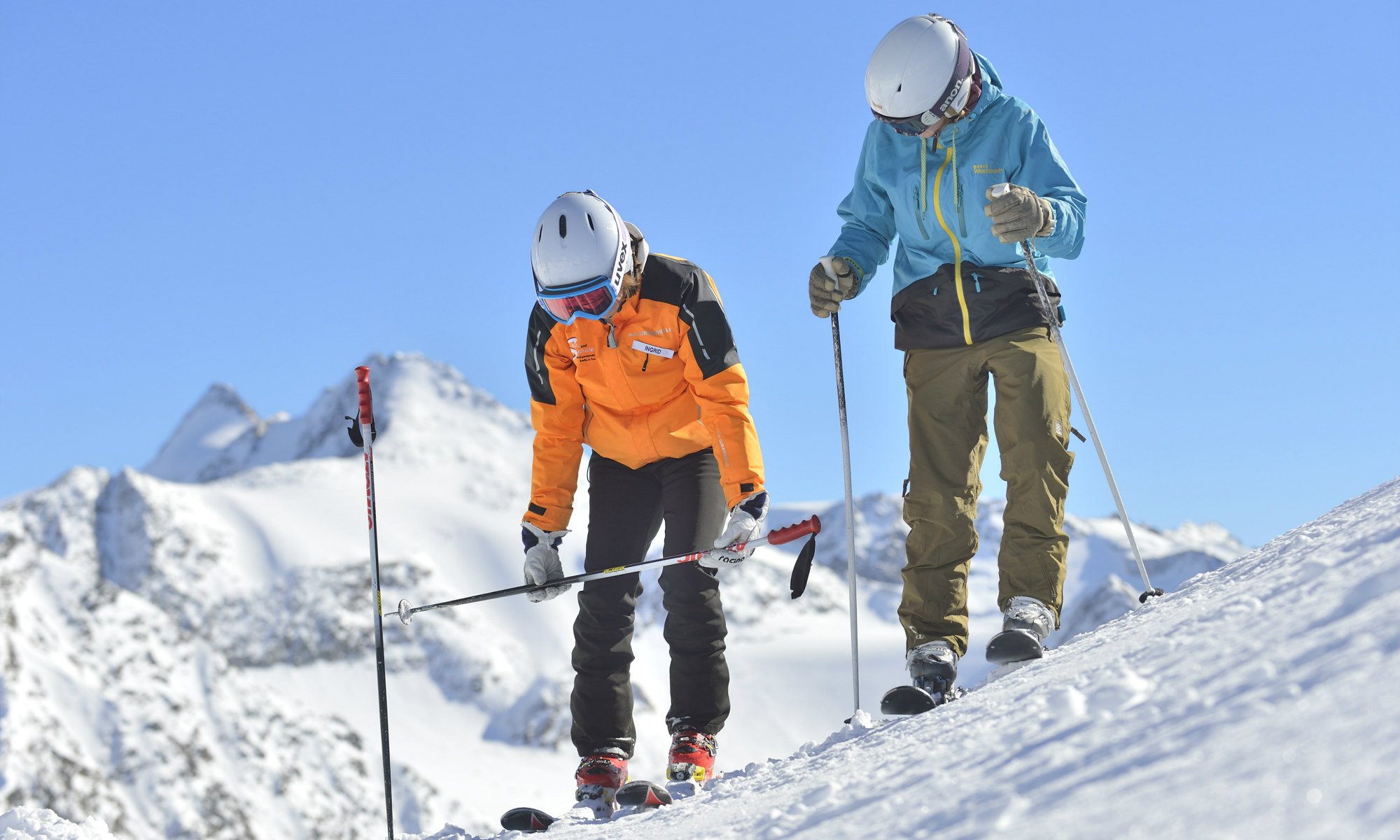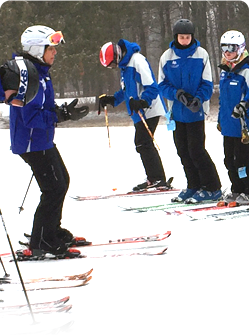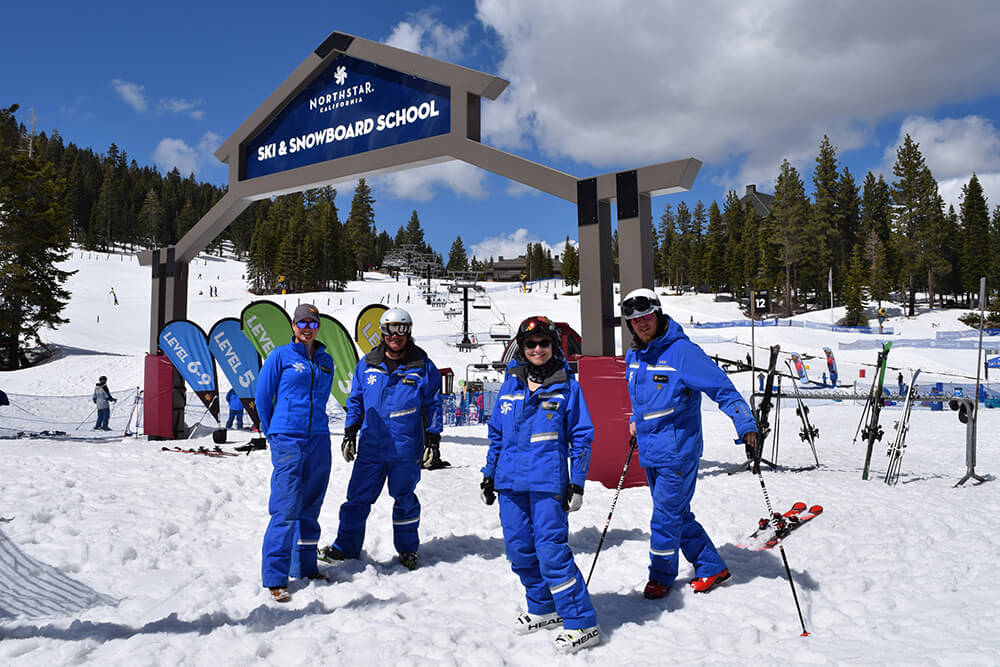
The right combination of bindings and boots for snowboarding is essential. They allow riders to have complete control over their board, and a firm grip. They make sure that riders are comfortable and don't put too much pressure on the ankles or feet.
Knee Pads
Your snowboard pants cuff should have knee pads. They provide a secure and firm fit that will hold them in place. These knee pads have soft padding that cushions the knees to prevent them from being painful.
Bindings Used
The most important part of your snowboard equipment is your snowboard binding. They will prevent you from using the full power of your snowboard, and make it more difficult to maintain your balance on the hill.

There are many kinds of snowboard bindings. Most common are step-in and strap bindings.
Strap bindings have an ankle strap that ratchets across your boot's top, making sure it fits into the binding's heel cup. They also come with a toecap strap, which ratchets across your boot’s toe to ensure that your foot is securely inserted into the binding.
ISO 15344 : 2005 - Snowboard Step-in Bindings - Requirements & Test Methods covers specifications and testing methods needed to ensure quality in the manufacture of snowboard step-in bins used for locking boots into place when snowboarding. These bindings are unique because they require that the boots click in to lock the bindings.
Burton's Step On Bindings
The Burton step on bindings are a great choice if you're looking to take up snowboarding or simply need a lock that works seamlessly. They are easy to lock into place, and the clit and lever mechanism on the heel-cup and toe side of the binding make them secure.

Burton's bindings are made from a high-quality nylon that is lightweight and durable. You can choose from a range of price options, including cushioning, support and pricing options to suit your needs.
Binding Sizes
You should always check the manufacturer's binding size charts on the product page of any snowboard binding you are interested in purchasing to make sure that they are a good match for your particular boots. Whether you are a beginner or an experienced rider, it is best to purchase a set of bindings that fit your boots perfectly.
Heel Hold and Flexibility
The snowboard boot's flexibility is an important aspect of choosing a binding that will fit your feet. A stiffer boot will respond better to terrain changes as you progress in your snowboarding career.
FAQ
How can I make traveling more fun?
It should be more than just about getting from A to B. It should not be about just getting from point A to B.
So, we created the app "Traveler", that helps you plan your trip using itineraries that are based on what interests you.
We are currently adding new features like booking hotels, flights, and renting cars.
The goal of this project was to create an easy travel planning tool for those who want to explore more while they're on the road.
What documents should I have with me while traveling?
Keep copies of important documents in your car for quick access when on the go. You may also want to consider keeping copies of your passport, driver's license, and other official identification cards and any credit card information you might need if you plan to use an ATM machine.
A photocopy is always a good idea. This can be used to verify your identity, if necessary.
Make sure to keep a copy of your itinerary and any reservations. These will help you to remember where you are and what you want to see.
Also, keep a duplicate of your flight ticket as well as details about your hotel reservation. You'll be able contact someone back home in case you need them.
You should never leave valuables behind. Your valuables will be safe if you keep them in a money belt, or inside your luggage.
Avoid losing valuable items by making sure your luggage is checked before you depart.
Remember, it's safer to keep things simple rather than trying to plan everything.
So just relax and enjoy your journey!
What cheap accommodations are available when traveling abroad?
You can find cheap accommodation in hostels, hotels and guest houses as well as bed & breakfasts.
Hostels can be affordable and have dorm-style rooms that guests share with their bathrooms and living areas.
Hotels are generally located in touristy areas.
Guesthouses look and feel similar to hostels except that there are often more people in each room.
Budget-conscious travelers are increasingly turning to bed & breakfasts. The guests stay in their own homes and receive a full breakfast as part of the stay.
What can I pack in my bag?
Always have at least two pairs. Two pairs should be sufficient for everyday walking and one for trips to the beach.
You should also make sure you have enough clothes for both situations. If you are traveling by plane, you need to make sure you have an extra shirt, pants, underwear, and socks.
You might consider bringing along some clothing if you plan to stay longer. This will make it easier to go shopping for new outfits and won't make you feel uncomfortable.
If you're taking a bus or train, you'll need to bring some comfortable shoes. If you drive, make sure you have a spare set.
You should also pack lots of toiletries including shampoo, toothpaste as well as moisturizer and deodorant.
You'll also need a flashlight and an insect repellent.
You can put all of these items into one bag, rather than trying to stuff them in several bags. It will help you save both time & space.
Don't forget to bring a towel and a washcloth. You'll be able to use them when you take a shower after a long day.
How long does it take for you to fly between countries?
The time taken to fly varies depending on the distance between the airports and the weather conditions.
It takes approximately 3 hours to fly.
However, the actual flying time depends on several factors such as the airline, the aircraft type, airport delays, and weather conditions.
Statistics
- Case in point: the private island of Ilha Caldeira, less than seven miles off the coast as part of the Primeiras and Segundas Archipelago, is located within the marine-protected area with 20 percent of the country's intact living coral. (travelandleisure.com)
- Pack sweaters, jackets, and underwear in reusable compression bags creating up to 75% more space in your luggage. (wikihow.com)
- No Checked Bags: No Alcoholic beverages with more than 70% alcohol (over 140 proof), including grain alcohol and 151 proof rum. (tsa.gov)
- According to Maori legends, this park holds 14 fjords that were all carved by a giant stonemason with an adze. (busytourist.com)
- You can use compression sacs or cubes to reduce the volume of your clothes by up to 80%—this is especially convenient for bulky items such as sweaters and jackets. (eaglecreek.com)
External Links
How To
How to plan for your next vacation
Planning a trip can involve many things including booking flights, hotel reservations, car rentals, and activities. It includes important considerations such a budget, destination, weather forecast, time frame, etc.
These points are essential to keep in mind when you plan your next vacation.
We have prepared a step-by, step guide to help with your next vacation planning. This guide has been prepared based on our experience and customer feedback. We hope that you will find the following guide useful in planning your next vacation.
Steps:
-
Your Budget is an important step in planning your trip. Before you can begin to plan where you want to go and what you'd like to do, you should know how much. You might have to cancel your plans if you don't have enough money.
-
Book Your Tickets - Once you've decided on your budget and set your priorities, booking your flight tickets is the first thing that you should do. Be sure to get the lowest price flight deal. You should also check to see if any airlines offer special deals during specific seasons. These deals could help you save a lot of cash.
-
Pick Your Destination. Once you've booked your tickets, the next step is to decide where to travel. Multiple factors come into play when choosing your destination, including location (where you're going), climate (what season to visit), culture (how friendly people are), and cost (how affordable it is).
-
Find Accommodations. After selecting your destination, the next step is to search for accommodations. Various accommodation options are available, ranging from cheap hostels to luxury suites. The type of accommodation you choose will depend on your preferences and needs. A hotel is not the best choice if you want to be close to the city centre. You may prefer quieter areas away from the crowds and a homestay could be better suited for your needs.
-
Select Activities and Attractions. Now, after you've selected your accommodation it is time to pick the activities or attractions that you would like to add to your itinerary. Depending upon the length of your stay you have two options: choose just a few activities, or add many more to your itinerary.
-
Select Activities and Attractions - Now it's time for you to plan your itinerary. You should follow a set schedule to get the most out of your trip. If you have the freedom to roam as you please, your trip will be even more enjoyable.
-
You can create an itinerary by creating itineraries. Write down all details about your trip, including flights, accommodation, activities, and restaurants.
-
Research Online – Before you go on your trip, make sure to research online. You can read reviews and testimonials about other destinations to get their opinions. You will be able plan accordingly.
-
Don't Overpack - This is one of the most common mistakes people make when packing. Don't bring five clothes. Bring three. Bring clothing appropriate for the weather you're visiting.
-
Be prepared. Before you leave for your trip, make sure that everything is in order. Don't waste time searching for important documents in transit.